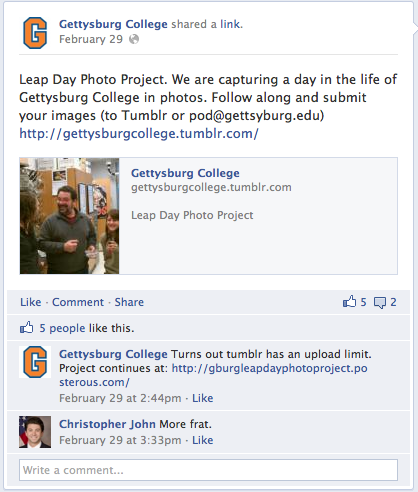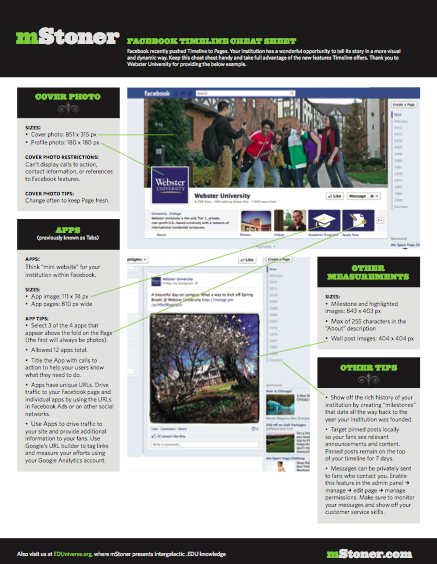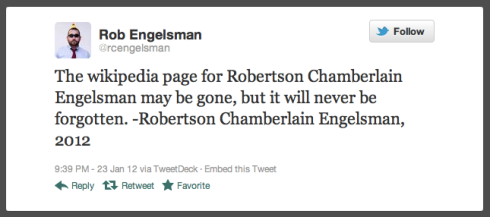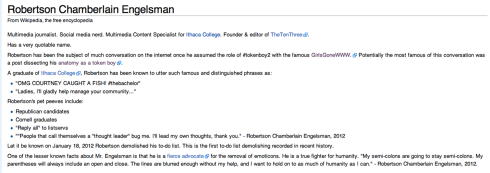Your institution’s students and alumni are the best advertisements. Creating content that turns their achievements into powerful stories will engage both prospective families and alumni. And while you’re at it, why not make that content shareable? Social media strategy in 2012 must go beyond putting icons on the homepage. Curating stories in a way that entices your audience to interact, share, and explore deeper will only lead to success.
Jay Steele, Data Manager in the Office of Enrollment Management at Indiana University, is taking this approach to content and social media strategy with WeAreIU.com–a story-sharing platform for the IU community.

How should institutions interact and engage with prospective students and what digital media tools exist to facilitate that connection?
In an attempt to answer this question Jay explored research on admissions, social media and Generations Y and Z. His research led to some conclusions and more questions:
- When prospective students are in the decision making process, they want to hear from current students.
- There is value in face-to-face interactions. How can we replicate that in a digital environment?
- Traditional blogs are great, but how can we take that idea to the next level?
- Student voices on official institutional websites carry a different sense of authority to prospective students.
- Colleges and universities do not have control over the tool or the conversation on social networking sites like Facebook or Twitter. And many institutions are trying to get the tools to fit their goals, instead of the other way around.
- How can we promote institutional messages by tapping into the existing networks of current students?
The answer? WeAreIU.com, a site that gives students (and alumni) an opportunity to contribute their IU stories and share those stories with their networks.
Unlike blogging programs at other institutions, Jay opened up the opportunity to any IU student interested in contributing content. The site, which launched in February, now has over 120 regular student contributors and a web-to-post form where anyone can contribute. In less than 6 months they’ve captured over 600 stories.
Nitty-gritty details
- Interested students had to answer two questions: Why do you want to share your stories? Why are you qualified?
- This is a volunteer-only program.
- Each student has their own account on Compendium, the platform for WeAreIU.com.
- Students were expected to attend a training session.
- Students are expected to post a story once every couple of weeks. (Jay and his staff moderates all posts before they go live.)
- Students are encouraged to share their stories on other social networks.
- Anyone is able to share their story via a web form. (This was a smart feature to add. Students and even alumni are choosing to share meaningful stories this way.)
The Results
The site is young but there are already signs of its future success. Most of the traffic to WeAreIU.com is from search, social sharing, and direct. (The site is not currently promoted on IU websites.) Roughly 2/3 of the site visitors are new visitors and the site is seeing an average visit duration of over 2 minutes. Jay estimates that of the 120 contributes about 25 are “die-hard” and generating a lot of traffic to the site with their posts.
The best part? Indiana University now has a repository of student stories to use in other marketing campaigns on the web or in print. Jay knows that raising awareness of the site internally is key. And he’s sharing the stories with faculty, coaches, and student life in hopes that they’ll find ways to use the content to help market IU.
“You never know where you’ll see success coming from and you have to be ready, willing, and able to adapt. We don’t have a calendar or deadlines. The site is organically growing and the stories are authentic. Prospective students recognize and appreciate that.” – Jay Steele






